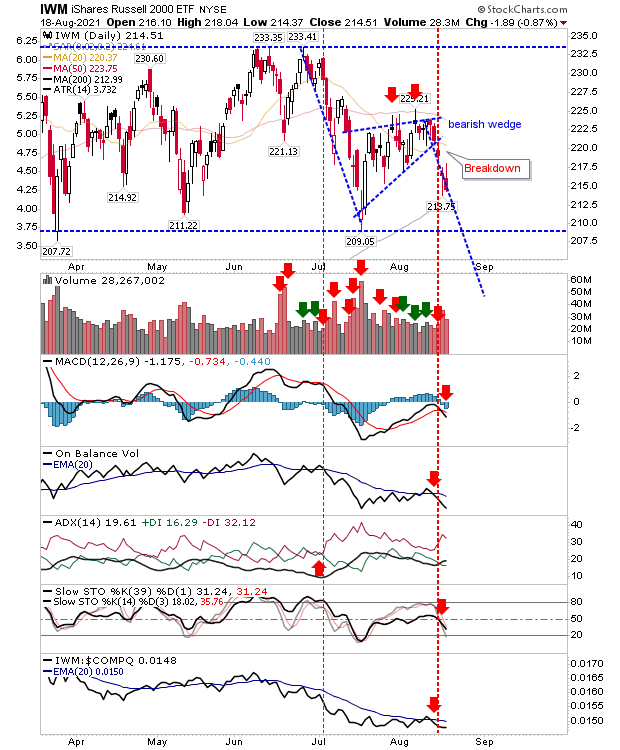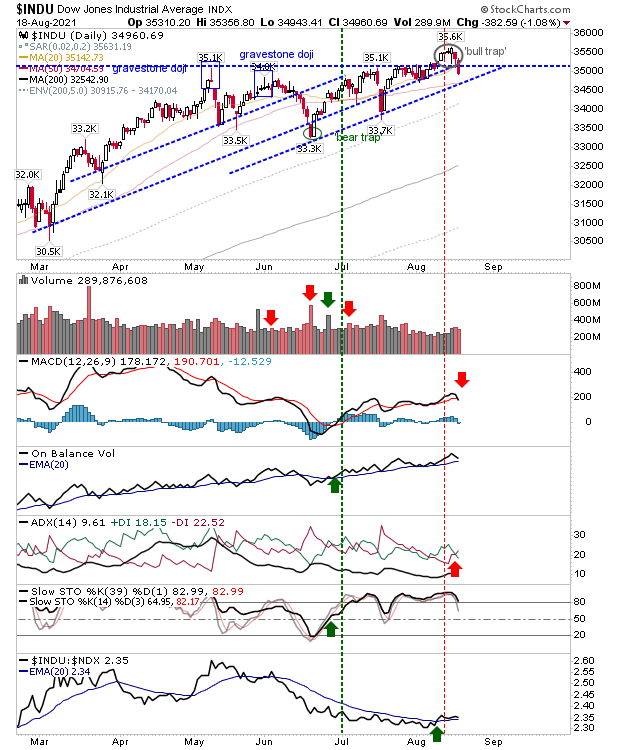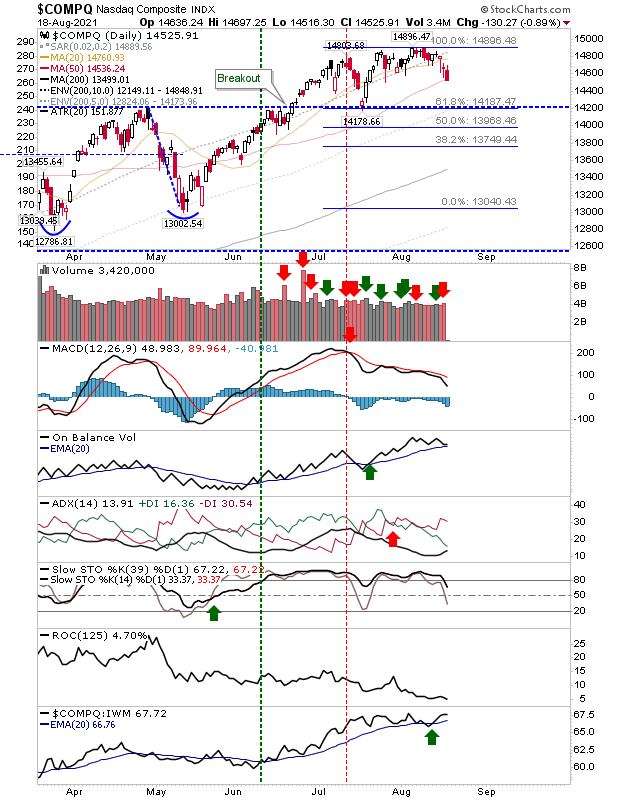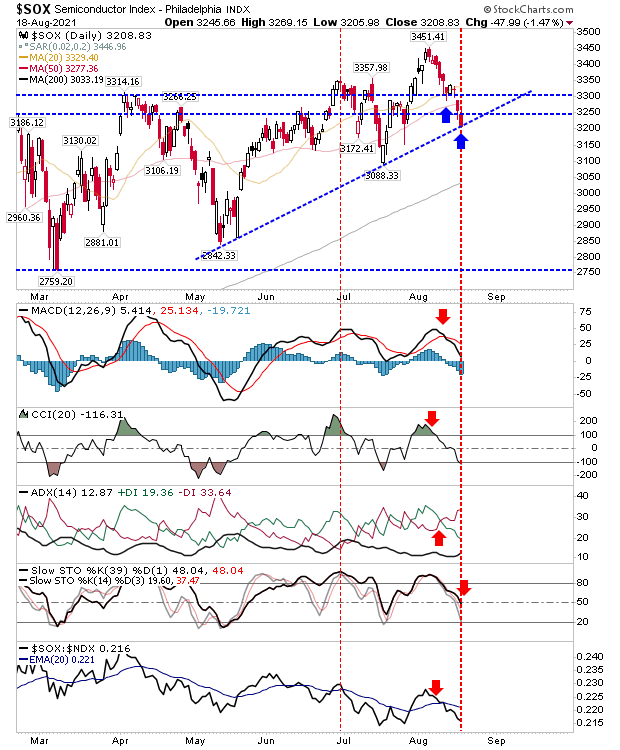Losses Continue As Dow Jones Finishes With Potential 'Bull Trap'
Today's news was not the continued losses from the bearish wedge in the Russell 2000 as such losses have remained contained by the trading range. Before moving on, the Russell 2000 does have the 200-day MA to look for as a possible positive test despite the net bearish technical picture.

But its the Dow Jones Industrial Average which is perhaps the most disappointing. It had finally marked a breakout after a 3-month consolidation, which should have set it up for a nice run. However, today saw this breakout get washed away with an undercut and close below breakout support. Today's loss came with a 'sell' trigger in the MACD and ADX. Despite this, it's not totally a goner. The index is outperforming the Nasdaq 100 and will soon be testing its 50-day MA. 'Bull traps' tend to be powerful topping patterns and if this evolves into something worse it will spell bad news for the S&P and probably the Nasdaq too.

The Nasdaq took a loss to take it to its 50-day MA, but remains well above June breakout support. Look for an intraday spike below its 50-day MA but a close above as I would expect to see some form of positive test here.

The Semiconductor Index is in a last chance saloon with rising support the only thing separating the index from its 200-day MA. The larger issue is that the index is back inside the prior consolidation, negating the breakout and setting up a likely move back to support of the March swing low. Technicals are net negative, confirming the weakness.

While weekly charts aren't showing a whole lot of damage in the markets, but we do have a scenario where there is little incentive for sideline money to step in and buy 'value'. Pullback 'buys' require a clear trend to feed into this and the July swing low was that opportunity, but there was no continuation of the rally when it came to challenging the all-time high. Defensive sectors remain the best chance for longs;
Disclaimer: Investors should not act on any information in this article without obtaining specific advice from their financial advisors and should not rely on information herein as the primary ...
more


